How Are Diamonds Made? Natural vs Lab-Created Explained
Two Paths, One Diamond Not all diamonds come from the same place — but they all start the same way. Pure carbon, crystalized under immense pressure and heat. Whether it…
I’m a self-proclaimed “prosumer” – and I highly doubt I’m the only one on PS. That said, there might be many aspiring jewelry shopping PS members that were just getting started before the pandemic. Sure, we’re all able to fall down the rabbit hole chasing pieces and loose stones online for now, but for some of us, there’s just something about the search in person, and we’re raring to get back to it.
I don’t think I can overstate it: I love antique and vintage fine jewelry. If I’m equally honest, I’d probably have to admit I love the hunt just as much. Who doesn’t love a sale or finding something unexpected? We all read about the lucky British lady who bought what she thought was a costume jewelry ring at a car boot sale (flea market) for $13 only to find out 30 years later the stone she had been wearing for fun was actually a 26-carat cushion-shaped diamond from 19th century, right?
Over the years, I’ve always made time during my travels to stop at resale and charity shops, antique and thrift stores, as well as flea markets. I’ve lost count of how many hole-in-the-wall places I’ve been to driving long-distance all over Texas, from Las Vegas to the California coast, from Houston to Colorado Springs and Fort Lauderdale… I’m eager to get back to Brimfield Market in Massachusetts, browse the booths at Les Puces de Saint-Ouen (better known as Les Puces) in Paris, and peruse the pretties on Portobello Road in London. Last week, a jewelry show that I attended twice every year before Covid-19 finally opened again with limited capacity and safety precautions, which made me think it might be the perfect time to share some of my tips and tricks:
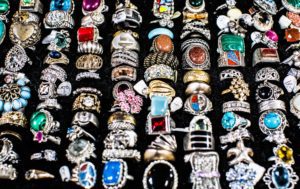
The lockdowns or temporary shut-downs, depending on where you are, are the perfect time to beef up on some basic jewelry knowledge. PS members should be pretty well-versed on the basics of diamonds, but it’s also important to know the basics of gold, platinum, and sterling, as well as common diamond-like simulants. Being familiar with precious metal hallmarks, such as knowing that “585” is the European hallmark for 14k, or knowing what paste looks like compared to CZ’s, rhinestones, or foil-backed glass, can prove to be very valuable. Most of the owners or managers of these shops or booths stock a menagerie of items, from furniture to paintings to clothes; one can assume the majority are not experts on jewelry if they happen to carry any.
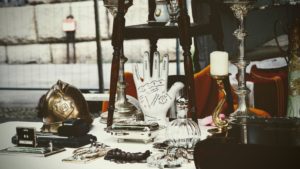
Being well-educated on what you’re looking for is the first step in protecting yourself – I can’t count how many times I was told a piece of jewelry was gold and after carefully inspecting it discovered it was not (after which the seller would admit they either “thought it was” or “wasn’t sure”). One memorable resale shop owner in a small town in the middle of nowhere tried to sell me Tiffany & Co. jewelry at an exorbitant price – he told me the sterling silver necklace and bracelet set were from the 1920s; once glance told me they were from 1994. While most sellers are pretty honest about their naivety, this one tried to argue with me – even after I pointed out the hallmark that included the copyright mark with the year on the clasp. Some better experiences included finding a massive vintage 14k yellow gold smokey topaz cocktail ring in a bowl of assorted costume rings for $9 and in a different city, a pair of Art Deco platinum, diamond, and jade screwback earrings in a case of vintage costume jewelry.
Finally, there’s only so much you can learn from a book. Unexpected or adjacent knowledge (such as how to negotiate, the average cost of professional cleaning and repairs… etc.) that comes from experience can be learned from others who share your passion – which makes a forum like PriceScope particularly valuable.
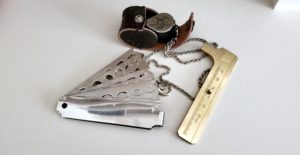
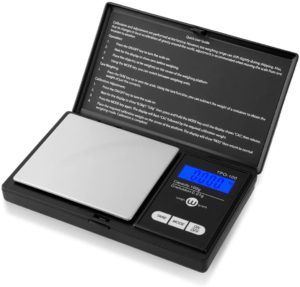
Since I never know when a little special sparkly something might pop up, here are some of the things I carry with me at all times in my purse:
If you don’t already own a loupe, I highly recommend it. Learning to use it can help you find hallmarks, maker’s marks, cracks in metal or stones, and more. It’s the best all-rounder. The industry standard is 10x magnification, although there are higher strength options out there.
Gemstone gauges are a quick and dirty way to estimate the weight of a stone. Although most PS members probably already know this, I want to stress again that this is a quick and dirty way – trying to pin down the size of a stone by measuring the top with a template is not exact.
For a more accurate measurement, you’ll need calipers. There are a lot of options, but I opted for a pocket-sized one. For those that hunt diamonds or other precious loose stones more than finished pieces of jewelry, this one is essential.
Finally, I also carry a digital kitchen scale. I consider this tool best for those who are moving into more serious hunting: I first bought mine when I started commissioning pieces and wanted to take advantage of opportunities to buy scrap gold to go toward my custom jewelry projects. Knowing what current silver, gold, and platinum prices are at the time you’re buying is essential, especially if you’re in a situation where there’s some wiggle room on price.
Don’t forget – these are basic tools for the prosumer in the field. For more definitive answers on something that you’ve got your eye on, always seek out the experts, such as a jeweler or an appraiser you trust. For those who prefer buying new jewelry in a traditional retail setting, this might have been a little off the beaten track. For my fellow treasure hunters, I hope this was brain-tickling and helpful – here’s hoping we’ll all be back to (safely) hunting again soon!
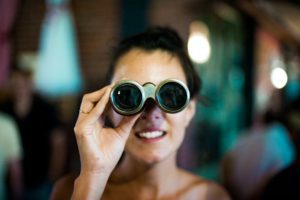
Do you have a special piece of jewelry that you came across?
Written by Gloria Cheng